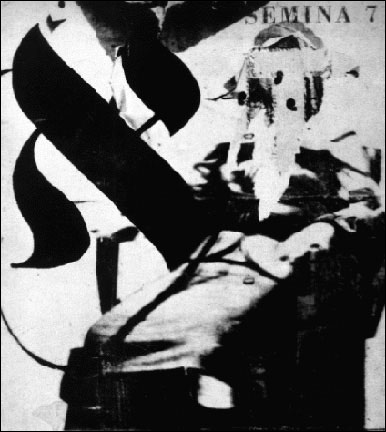Wallace Berman: From Beat to Fluxus and Beyond
A new exhibition at Nicole Klagsbrun examines the influence of Wallace Berman on subsequent artists though featured works by Allan McCollum, Al Ruppersberg, and Andy Warhol. Berman, who shunned public attention, engaged in projects that ranged from writing rhythm and blues songs with Jimmy Witherspoon to painting Hebrew letters on parchment to publishing the underground journal Semina.

Wallace Berman was interested in cabalism, a mystical current within Judaism that attributes hidden meaning to characters in the Hebrew alphabet and their corresponding numbers. One of the themes that most interested medieval cabalists was the creation of the world, and Wallace Berman’s use of cabalistic symbolism addresses the theme of artistic creation. His Verifax collages (Verifax was a precursor to the Xerox machine) make use of a variety of images from popular culture. Photographs of female nudes and couples in sexual union from girlie magazines are juxtaposed with other images taken from popular culture, such as a wrecked automobile ostensibly orbiting the earth, suggesting creation myths from a personal mythology.
The Hebrew letter aleph has interested cabalists for centuries as both the first letter of the alphabet and a silent letter. Wallace Berman chose the title of Aleph for a short film that he realized between the mid 1950s and 1960s, which involves a montage of imagery culled from the media, popular culture, and original footage. Clips of diverse people, environments, situations, and machines are framed with Hebrew letter titles. In terms of both its themes and style, Berman’s Aleph seems to have influenced Darren Aronofsky’s Pi of 1998, with its high contrast montages of natural forms, mathematical formulas, and Hebrew characters.
In 1957 Wallace Berman showed Verifax collages at the Ferus Gallery, owned by Edward Kienholz and Walter Hopps. Andy Warhol, who showed at Ferus two years later, also began to experiment with the Thermofax, a Verifax variant, and the legacy of Wallace Berman is clearly felt in Warhol’s later appropriated imagery. Likewise, Berman’s journal Semina reflects a Fluxus interest in ephemera and art outside galleries. In the menus of Al Ruppersberg, which proffer such delicacies as “Three Rocks with Crumpled Paper Wad” and “Al’s Burger – Sky, Land and Water” one feels a particular affinity with Berman and his distinctive transformations of the everyday.
© Daniel Rothbart, 2000.